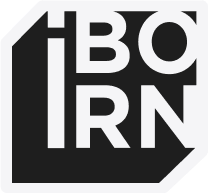About the project
Designing a complex app presents unique challenges, especially without a well-structured design system. In the Hunter Douglas project, we tackled the challenge of building an IoT solution for smart home app for controlling window blinds. Our UI/UX design team focused on developing the mobile app design system, enhancing overall efficiency for the whole team and enabling rapid product design.
The goal
Our primary objective was to streamline the transition from conceptualization to a Figma prototype in under 5 minutes while ensuring consistency across the entire application. We aimed to adapt our design gradually to offer the ultimate user experience and satisfactions across both iOS and Android platforms. Our specific goals included:
-
Rapid prototyping of wireframes
-
Consistency throughout the application
-
Easy maintenance of design elements
-
Improved development efficiency

The challenge
Creating a new design system is akin to building a new product - but for a very specific target audience, as it’s used by product owners, designers, engineers and marketing. The task was particularly demanding given the existing application’s inconsistencies. Adding to the complexity, we were working with an app that supports:
-
12 different brands, each with unique branding
-
Light and dark theme
-
10 different languages
-
A diverse range of unique smart blinds
-
2 mobile apps, iOS and Android versions
The team
-
UI/UX Designer
-
Android Engineer
-
iOS Engineer

The technology
-
Figma
-
Android
-
iOS
The solution
Figma emerged as a crucial tool, enabling our design team to achieve efficiency and quality. By deeply understanding the needs of designers and engineers, we transformed the design process from mere aesthetics into functional prototypes that closely mimic real applications. The focus extended beyond visuals to ensure each screen functions as a dynamic unit that adapts to various scenarios.
To build and deliver our design system, we employed several tools and concepts:
-
Design tokens: Serving as building blocks that define the visual characteristics and properties, design tokens replace complex values with easy-to-understand names, providing a centralized way to control and update design properties.
-
Auto layout: This feature allowed us to create responsive and flexible components that automatically adjust based on the content, screen sizes, or orientations, significantly reducing the time spent maintaining layouts for different screen sizes.
-
Atomic design: We organized components into atoms, molecules, organisms, and templates, allowing for substantial changes in one place. This hierarchy enables swift updates across thousands of screens with minimal effort.
-
Micro interactions: Each component has built in micro interactions that cover the basic prototyping and effects, eliminating the need for repeated prototyping of common behavior. To further streamline design tasks, the behavior of the components is also controlled by conditional logic and variables, and the components preserve their state, making the prototype even more realistic.
-
Variables and modes: Every color, spacing, font face or size, every shadow or radius, every icon and even component behavior are modeled by variables. For each of these we set up primitive variables with clear naming which hold the real value, for example a HEX color code or a number representing pixels. Then we create semantic variables that serve as an interface and are used in the components. These are then organized into collections and modes. When done, by simply changing the mode, we can produce a fully functional prototype tailored to different brands in seconds. This drastic boost in efficiency enabled us to focus on product design, instead of maintaining the screens.
-
Streamlined organization: By categorizing design files into pages for research, wireframes, mockups and prototypes, we reduced the total number of screens by a factor of 20 to 30. Interactions are now modeled within components, significantly simplifying user flow design.
The final step consisted of implementing the design system within both the Android and iOS applications, ensuring that the same components served as the foundational blocks for each platform. This not only speeds up application development but also reinforced quality and consistency.

The result
We successfully built a modular and scalable design system that works seamlessly across different brands, platforms, and languages. Designers and developers now collaborate more effectively, saving time and reducing errors. This streamlined workflow accelerated project speed and consistency, allowing us to focus on growth rather than repetitive manual tasks.
Now, a screen can be fully designed in the time it takes to enjoy a shot of espresso, and the important aspects in the design process are the ideas and understanding user behavior, not endless tasks for changing buttons or colors. Our design process has transformed from chaotic to harmonious, serving as a platform for success of the Hunter Douglas’s products.
Let's discuss your project.
We're all ears.
Drop us a line


